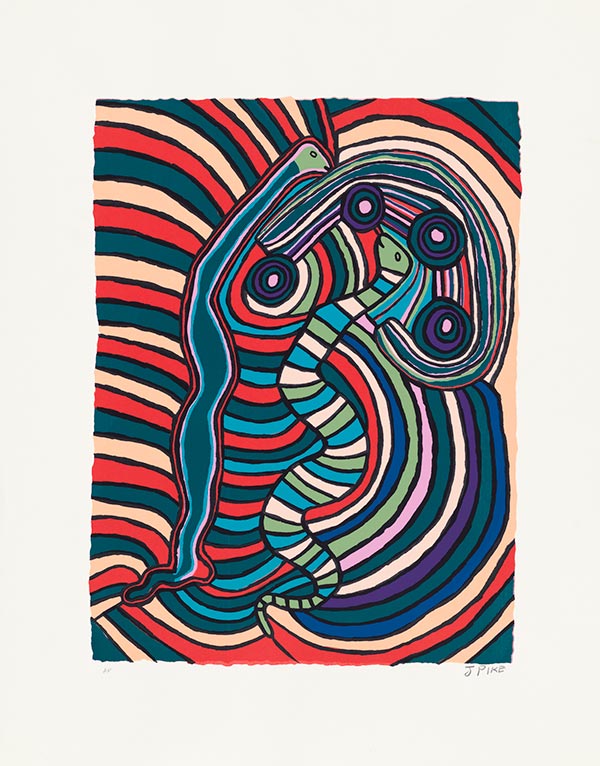The Jimmy Pike collection
Country in colour
The Great Sandy Desert
Pike’s brilliantly coloured artworks depict his desert home brimming with life, countering any notion of the desert as a barren or desolate place. Ngarrangkarnijangka (spirit beings) occupy many drawings in the Jimmy Pike collection and jilji (sandhills), partiri (flowers) and pamarr (rocks) are recurring subjects that highlight the diversity of the environment in the Great Sandy Desert.

The Great Sandy Desert
Partiri
Partiri is the Walmajarri word for flowers, a major subject of Pike's colourful felt-pen drawings. Partiri are drawn surrounded by jilji or emerging into bloom after desert rain. A number of Pike’s partiri are also drawn from his own imagination, presenting a colour field of new possibilities.
Ngarrangkarnijangka
For the Walmajarri people, the desert is home to many ngarrangkarnijangka (spirit beings). The Jimmy Pike collection includes drawings of murungkurr (spirit children), wurruwurru (spirit men of the sandhills), as well as mangkaja (an owl spirit of the sandhills). Kalpurtu (snakes or rainbow serpents), who often inhabit waterholes and bring rain, are also frequent subjects.
Jilji
Jilji are the long rolling sandhills that cover large parts of the Great Sandy Desert. Drawn with the thin line of felt-pens in contrasting colours, Pike’s jilji are sometimes orderly; while at other times, they appear maze-like, readable only to those who know the desert. In his self-portrait Pike has surrounded himself with jilji, presenting the artist as part of his country.
Pamarr
Pike’s pamarr or rocky landscapes are often represented by curved lines that surround a waterhole or emerge from jilji. The collection includes a number of colourful examples as well as many pamarr drawings completed in a single colour: Rocky Landscape in red and others in black and blue. These drawings demonstrate both Pike’s mastery of his chosen medium and his deep knowledge of country.

















